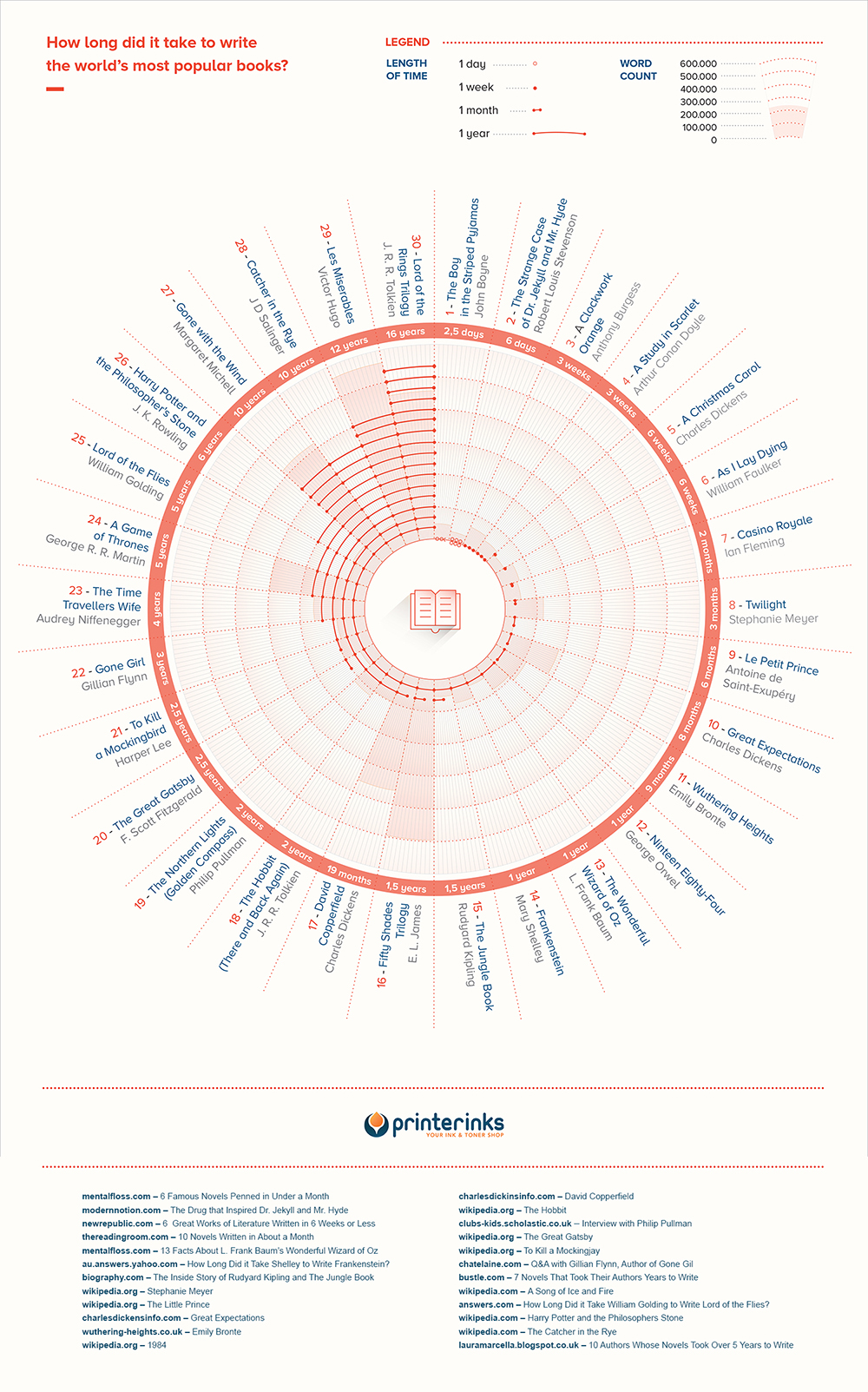How Long Did it Take to Write the World’s Most Famous Books?
With frustrated fans eagerly awaiting the next instalment of George R.R. Martin’s ‘A Song of Ice and Fire’ books, many loyal readers of his series are asking “how long does it really take to write a literary masterpiece?” It seems that there is no definitive answer to this question - from periods of persistent procrastination to flashes of creative enlightenment - there are an endless number of factors which can influence how long it takes to write.
In the case of Mr Martin, who has been working on ‘The Winds of Winter’ since 2011, his busy schedule writing for other projects, enjoying his fame, and the predicted length of the manuscript have all contributed to delays.
When inspiration does strike, some famous novelists have proven that a work of fictional brilliance can be produced in a matter of days. From ‘The Boy in the Striped Pyjamas’ which the author, John Boyne, claims to have written in 2 ½ days, to ‘The Lord of the Rings’ trilogy by J.R.R. Tolkien which took a staggering 16 years to complete, we have collated 30 of the world’s most famous books to divulge and compare how long they took to create.
As well as knowing simply how long these novels took to write, it is interesting to note the books word-count in comparison. At over 58,000 words in length, ‘The Strange Case of Dr. Jekyll and Mr. Hyde’ was written in only 6 days, meaning Robert Louis Stevenson wrote a remarkable average of 4482 words per day to finish his story within this time. Impressive when compared with JD Salinger’s average for ‘The Catcher in the Rye’ at a mere 20 words per day over 10 years.

As one of the largest printer ink, printer toners and replacement ink cartridges in the UK, Printerinks.com specialises in offering the best possible prices for its customers, whether it is for original branded ink such as Epson Ink Cartridges or compatible cheaper printer ink.
We publish educational infographics and content which we hope is useful to our readers and fans of the printed word. We also run a very informative blog here.